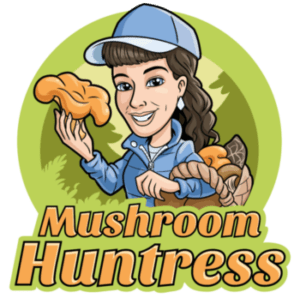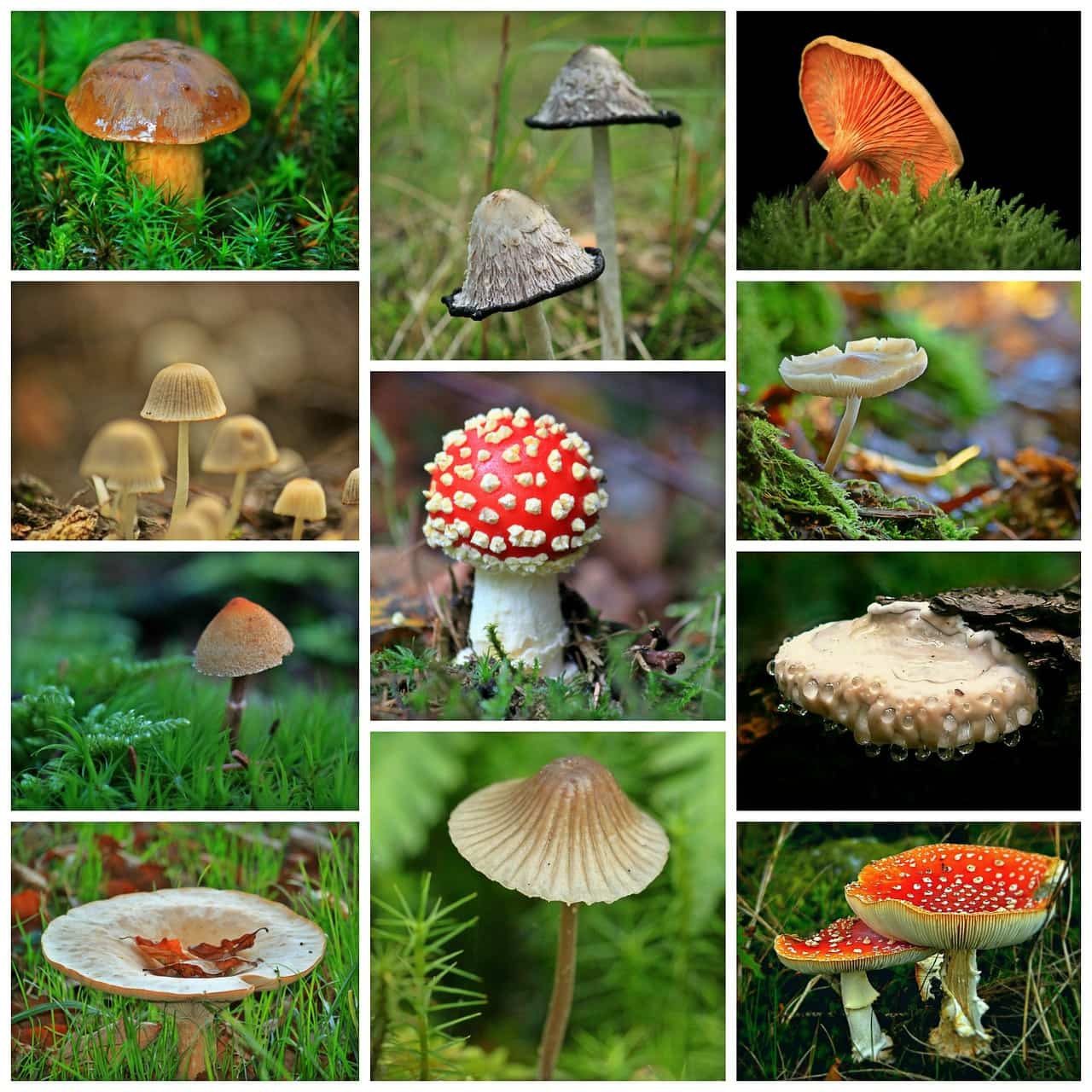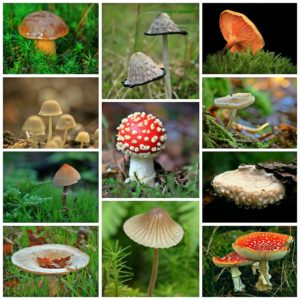
Identification is a key and critical part of mushroom foraging. And there’s a lot to it. Mother Nature does not skimp on types, colors, sizes, and shapes of mushrooms! Fungi are, in fact, their own kingdom. It is vast, yet identification must be done before any consumption. It is not as simple as the beginner might hope, though. Even the most experienced foragers come across fungi they cannot identify.
Most importantly, learn how to identify mushrooms yourself. Do not, please do not rely on internet sources, especially Facebook groups or online forums. That is a quick way to end up in the hospital. Online forums are a great resource, and can potentially point you in the right direction. However, final identification comes down to you and your skills. Anything you consume is your responsibility!
The 7 Points of Mushroom Identification
Overall Shape
Does the mushroom look similar to the button variety found in most grocery stores – the so-called classic mushroom shape? Many people think all mushrooms have this same shape, bulbous top, gills underneath, and a short stem. This couldn’t be further from the truth.
Fungi are so varied it is hard to believe they are all part of the same kingdom. There are mushroom varieties that look like tiny cups, horse hoofs, stars, fingers, shaggy mane’s, coral, giant white soccer balls, and beyond.
The first step in identification is to determine the overall shape. Most identification books separate the types by shape to make identification easier.
Cap
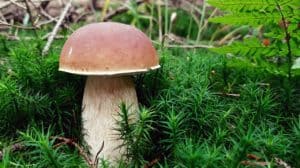
Flat caps, curved caps, and indented caps. Small, large, bell-shaped, saucer-shaped, depressed, and cone-shaped. Pitted, speckled, and dotted. The range of cap colors, sizes, and shapes are immense. To be a good identifier, you need to learn the variations and how they apply to the different species. Also, some fungi start with one cap shape while young, and then they change as they mature.
The caps of some mushrooms change color when bruised. This phenomenon is widely helpful in identification. When testing for color change, break off a piece of the cap and wait a few minutes. The majority of color changes will happen instantly, while others take a little time to show.
Gills, or Lack Thereof
Gills are found on the underside of the mushroom. There are five ways the gills attach or don’t attach to the stem. The gills attach narrowly, broadly, with a notch adjacent to the stem, descending down the stem, or not at all.
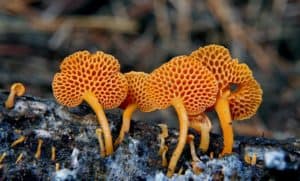
Not all mushrooms have gills. A broad class of fungi, called boletes, have only pores on the underside. Hedgehog mushrooms have ‘teeth,’ which are small spiky spines underneath the cap. Bracket fungi have smooth, porous undersides. Many popular edible mushrooms don’t have gills, including Chicken of the Woods, Morels, Lion’s Mane, and Hen of the Woods.
Stem
The stem is a distinctive trademark of a mushroom. They are either straight, bulbous at the end, club-shaped, tapered, or cup-shaped at the base. Long stems, short stems, and non-existent stems are all common. The color is also important. Is it one color, or speckled, or streaked? Some stems are hairy or scaly.
Where the stem attaches to the cap is also a potential identifying key. Is the stem attached in the center of the cap, or off-center?
Another essential identifying characteristic found on stems is a ring. This usually occurs a few inches below the cap. The majority of Amanita species, a common poisonous mushroom, have rings two-thirds up the stem. Knowing this can prevent dangerous mix-ups and misidentifications!
Smell
Don’t forget to smell the mushroom! The best time to do this is before or directly after it is picked. Oyster mushrooms have an anise scent. Chanterelles smell like apricots. The almond russula smells like…almonds! Scent is important.
Location
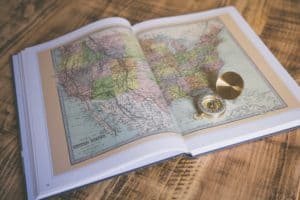
The majority of mushrooms are location specific. This means they only grow in association with certain trees or in fixed environments. And, each mushroom has its’ own preference. They even vary within species. For example, some morels prefer fruit trees. Other morels grow only at burn sites or in association with tulip trees.
Pay attention to whether the mushroom is growing on the ground, on a tree, and whether that tree is living or dead. A great way to identify mushrooms is to identify trees. A lot can be determined by knowing which type of tree or trees the mushroom was found near or on.
Spore Print
A spore print is like the fingerprint of the fungi. It is a unique identifier, though it rarely can be used alone to identify a mushroom. Spores are microscopic. However, they do have a color that can be seen. The color of the spores is vital in many look-alike mushroom identification problems.
To take a spore print, first, remove the stem from the mushroom. Place the mushroom, gill-side down on a white piece of paper. Cover the entire mushroom with a glass jar or bowl. Let it sit for several hours. Remove the glass jar and lift up the mushroom. Underneath will be a beautiful and delicate imprint of the spores.
Entire books are written about mushroom identification. Take it slow, and you’ll learn it quick enough. It takes patience and practice. Although it may seem overwhelming, it isn’t difficult. Get out there in the woods and fields and start investigating. The best way to practice is to gather the mushrooms around you and go through the identification steps. Soon, it’ll be like second nature. Happy foraging!
